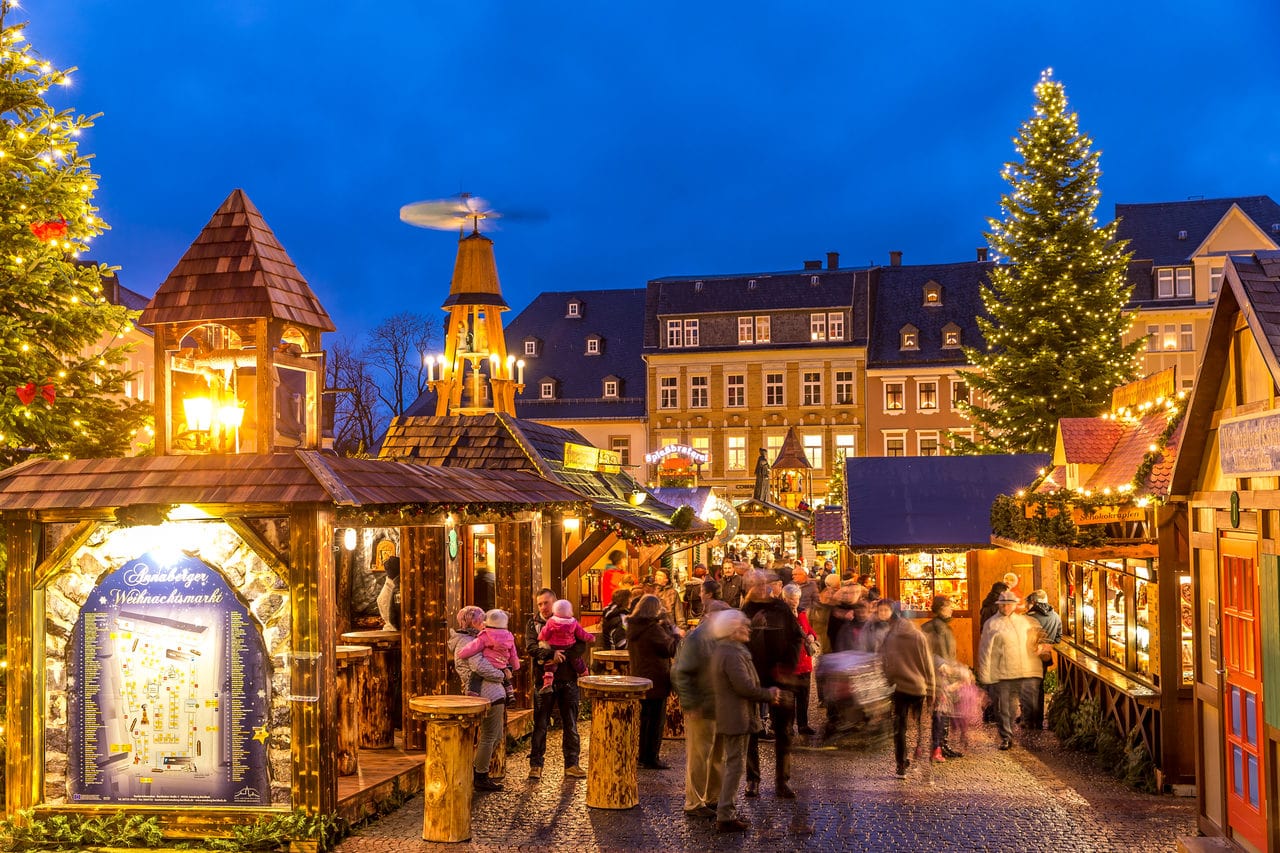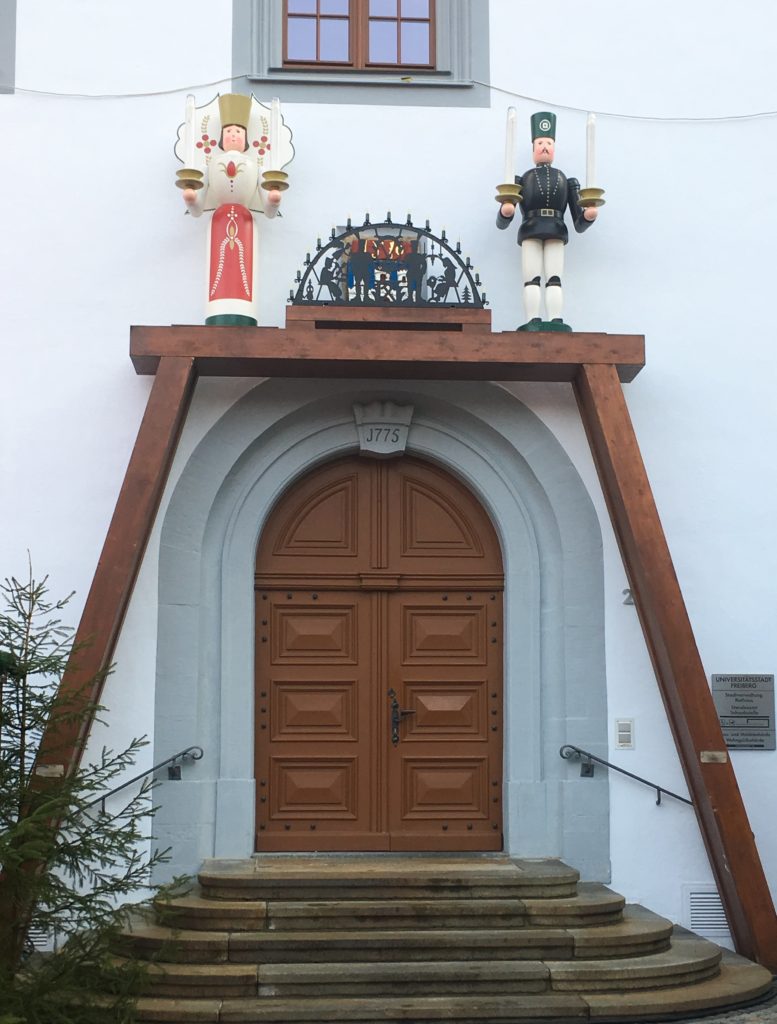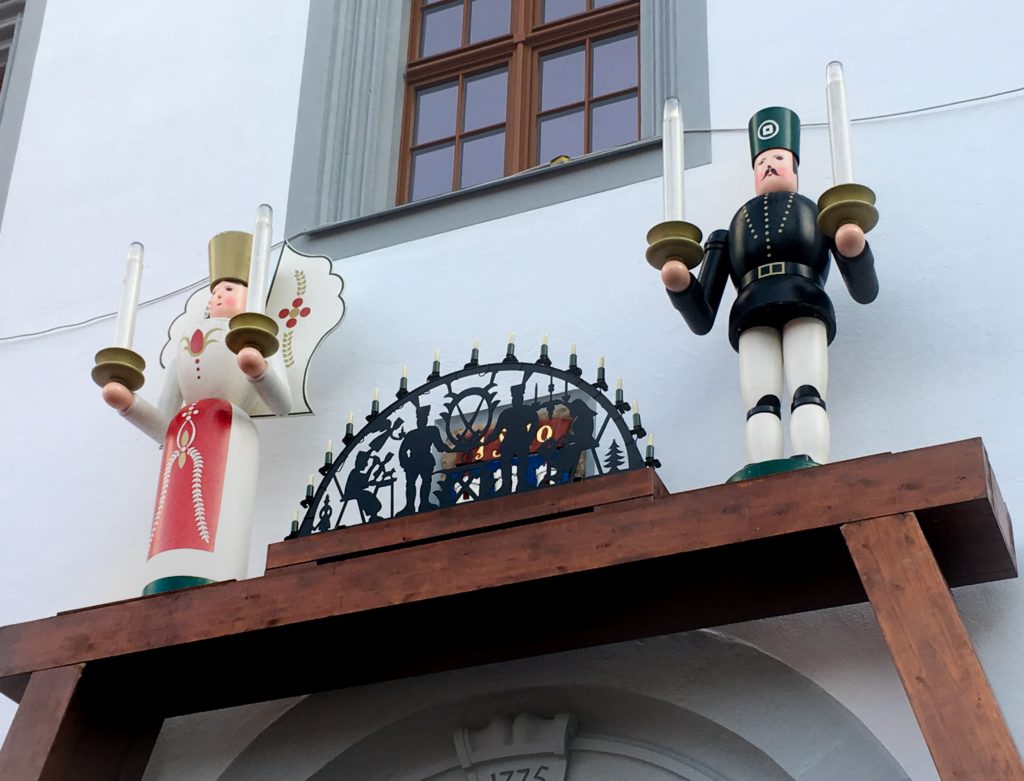By Lindsay Taylor, a US-American anthropologist living in Berlin, and Karen Kiss, a Hungarian anthropologist living in London
Wandering through the streets of an Ore Mountain town of Saxony, Germany in early December can be a gloomy experience, yet in the bite of the cold on your cheeks is a promise of Christmas. Darkness descends early, but all around is the warm glow of lights guiding you through the meandering streets to hearth and home. Schwibbogen and Pyramide adorn every window, their twinkling lights intrinsic to the Ore Mountain yuletide traditions. But a closer look reveals an unusual face between the familiar figures of angels and the Holy Family — a silver miner. It might surprise many to learn that these cosy and comforting traditions are actually rooted in the depths of the region’s dark and cold mines.
Mining in the Ore Mountains
The Ore mountains were remarkably rich in silver and other metals, which attracted miners to the region since the 12th century, continuing up until the 20th century. The mines provided livelihood for many families and wealth for the cities. However, while the silver they brought to the surface was sparking and delicate, work in the mines was rough. While visiting the Markus-Röhling-Stolln Exhibition Mine, we had the chance to learn about and experience life underground. While passing the jagged walls of the shafts, our guide explained that in the 18th century the miners often only used a small hammer and chisel to break down the solid walls. During the 12-hour shifts, the average miner was only able to go through 3 cm of the rock.
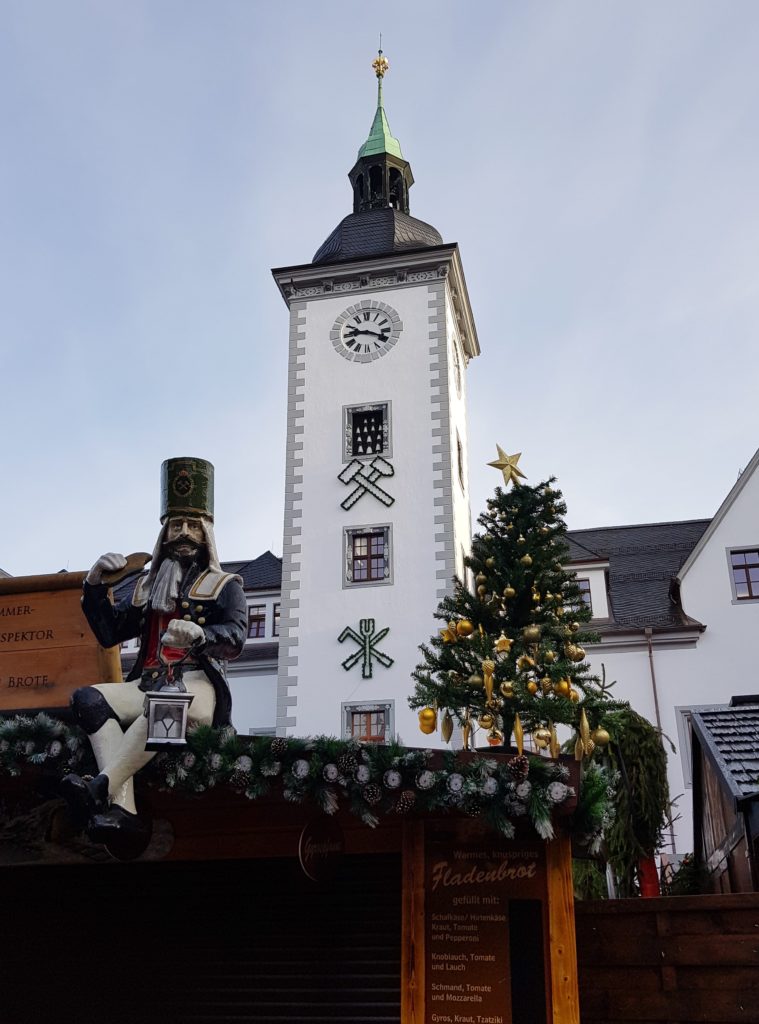
The conditions of the work were also dire. While the winding tunnels were well-lit while we explored the site, for a few seconds we got a taste of how what it was like working here. Suddenly, we stood in nearly complete darkness, with only a tiny, flickering flame illuminating the tall and damp caves. Working such long hours, the miners did not even get see the sun when they were outside the pits throughout several months of the year. In this often dim and gloomy world, light and warmth became increasingly precious. This longing led to the formation of a rich set of traditions which still shape our understanding of the perfect snug and cosy Christmas in many countries.
To close out the year, miners would end their final shift in the mines with a so-called Mettenschicht. The foreman would signal an early end to the day’s work, and the miners would gather in a designated room to celebrate the end of the year with traditional food, drink, and songs. Contributing to the festive atmosphere, of course, was the warm glow of candlelight brightening the room, providing a substitute for the sunlight which the miners were so long deprived. During celebrations, the miners would hang their lanterns in an upside-down U-shape, symbolising the gate of the mines and offering a promise of spring sunshine following the long winter months.
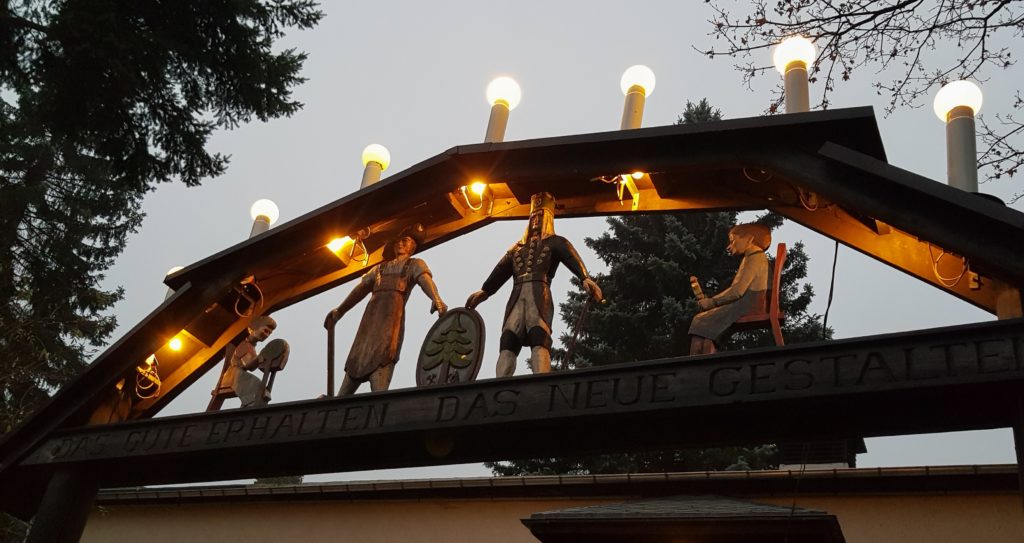
This tradition is commonly thought to be the origin of the Schwibbogen; an arch with candles following the curved shape, often featuring various figures standing under the ‘gate’. Around Christmas they were placed in the windows to guide miners home through dark winter nights to the safety of their homes. Since its invention in the 18th century, Schwibbogen have taken on many forms as they started to pop up in more and more windows around the world. Some feature elaborate Christmas scenes, while others only retained the arched shape on which the candles rests. However, in the Ore Mountains the most common version still reminds of its roots in the mining culture. It features two miners in traditional attire in the centre who are accompanied by the representatives of two other core industries of the region: a lace maker and a wood carver.
Photos: Lindsay Taylor
Christmas Carvings
Though the first Schwibbogen were made of metal, today they are almost always carved out of wood. This is due to the prominence of wood carving in the Ore Mountains, which — unsurprisingly — is also rooted in the region’s mining culture. The hard and dangerous work also often caused injuries or forced miners into early retirement, leaving them in a need of an alternative source of income. Additionally, decreasing natural resources by the 18th century necessitated the diversification of local craft. As the mountains are covered with a blanket of forests, woodworking became a feasible alternative. Naturally, wood carving became a key component of local Christmas traditions.
One example of the miners’ handiwork is the Christmas Pyramide, an intricate and ingenious creation which uses heat to create a spectacle of moving figurines. A typical Pyramide features one or more levels of circular plates with carved figures decorating them. The figures usually depict a nativity scene, though motifs were often mining-related as well. The plate is framed by a set of candles, and has a pole running through its middle, ending in a propeller on top. The heat rising from the candles moves the propeller, setting all the carved figures in motion on the different levels.
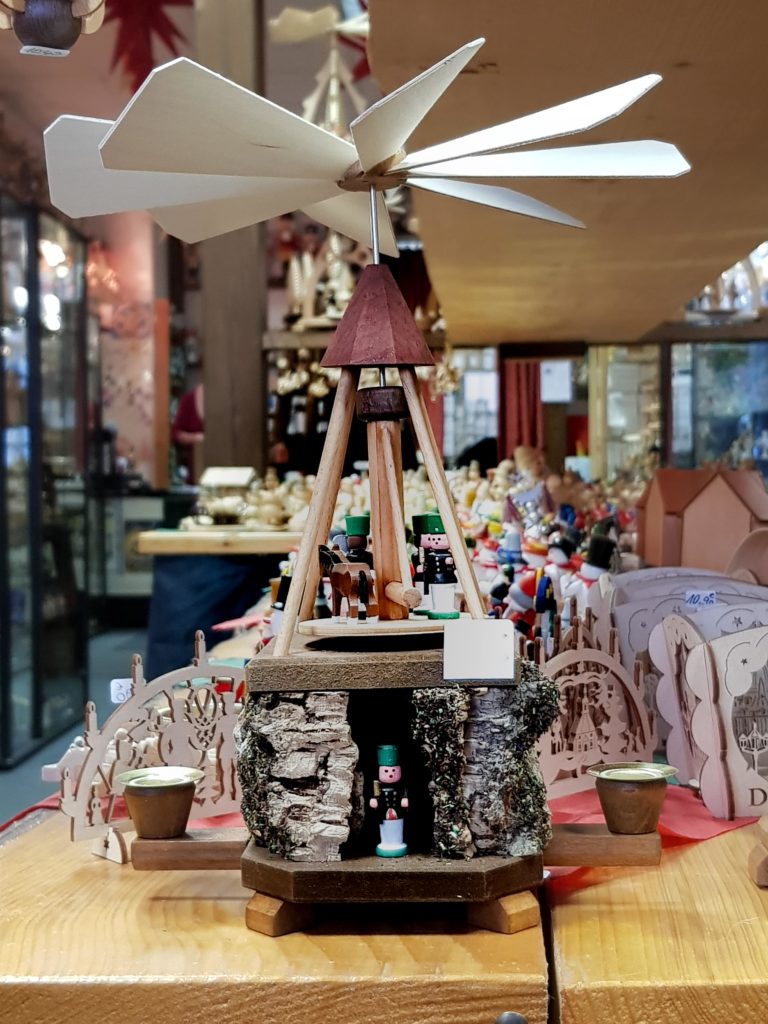
Some say that miners even brought the pyramids with them underground in order to check oxygen levels. If the candles go out, it’s a sign that they’re running out of breathable air. Today, Pyramides are not only used to create a festive mood in homes, they are also frequent attractions at Christmas markets — though these larger versions use electricity to stay in motion.
The Schwibbogen and the Pyramide are well loved in many locations outside the Ore Mountains. However, their influence is not comparable to another figure originating from the region, which has become synonymous with Christmastime worldwide — the nutcracker. Though the E.T.A. Hoffmann’s yuletide story and the subsequent ballet made nutcrackers an international Christmas symbol, these decorative figurines were first invented in the Saxon town of Seiffen. They often feature various figures of authority, such as kings and soldiers, but it is also possible to come across them in traditional mining uniforms when wandering around the towns of the Ore Mountains.
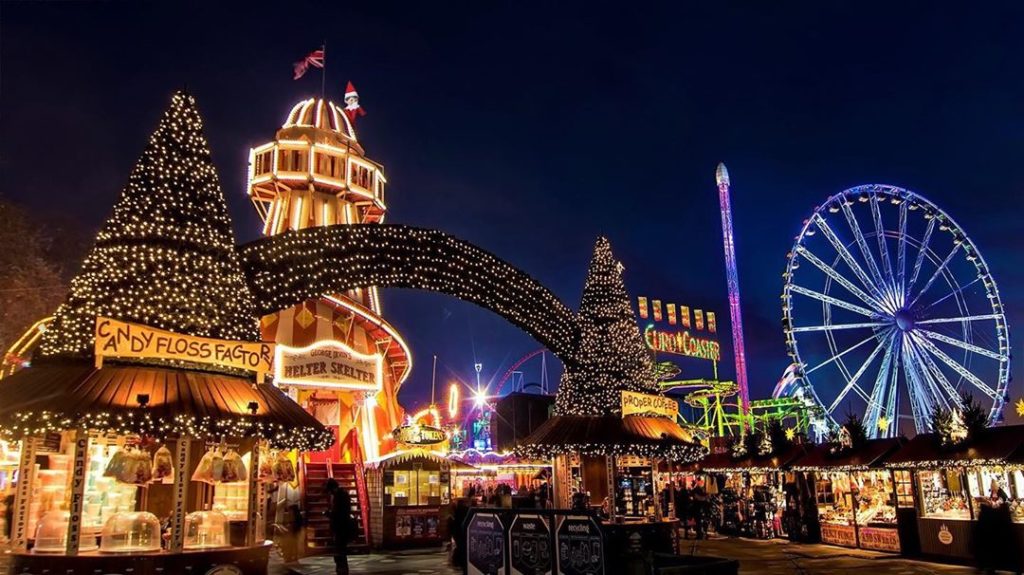
Nutcrackers are perhaps the most obvious example of how widespread the Ore Mountain holiday traditions have become, but their influence is everywhere. For nearly six centuries, the region of Saxony has been celebrating the advent season with Christmas markets. Once, it was rare to see these markets outside of Germany, but now they reach to all corners of the globe. These festive fairs are more popular than ever, and it’s not hard to imagine why. In a time of fractured political discourse, mass displacement, and climate emergency, the world can seem like a dark place. It’s unsurprising that people flock to the warm glow of Christmas lights for comfort, just as the miners would have during their long, dark winter months. The commercialisation of Christmas may have rendered some of the miners’ original symbology unrecognisable in some cases, but at their core, the principle remains the same. Just as the lights guided silver miners safely from the mines and offered a promise of spring to come, centuries later we are still turning to these lights for hope and comfort during the holiday season.
XXXXXXXXXXXXXXXXX